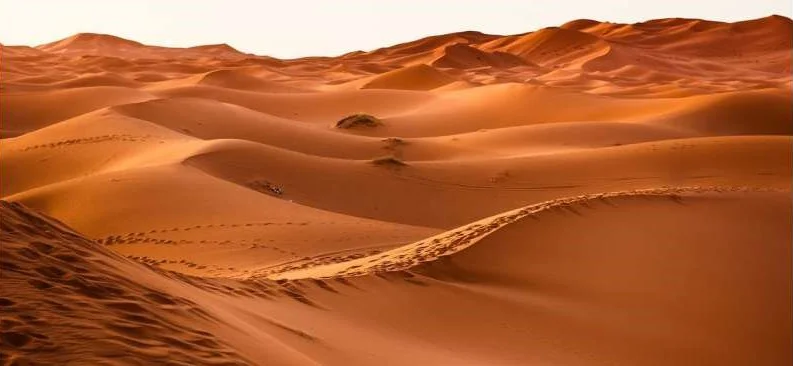Tassili N’Aijer, Algerian Plateau, is Africa’s largest national park. Among the huge sandstone formations lies arguably the largest art museum in the world. There are more than 15,000 engravings and paintings on display, some dating back 11,000 years according to scientific dating methods, representing the unique ethnological and climatic record of the region.
Interestingly, however, these images do not depict the arid and barren landscape that exists in Tassili-N’Ager today. Instead, they depict a vibrant savannah populated by elephants, giraffes, rhinos, and hippos. This petroglyph is an important record of past environmental conditions prevailing in the Sahara, the world’s largest hot desert.
These images depict a period from approximately 6,000 to 11,000 years ago called the Green Sahara or North African Wet Period. There is ample climatological evidence that during this period the Sahara supported forested savannah ecosystems and numerous rivers and lakes in the region now known as Libya, Niger, Chad and Mali.
This greening of the Sahara has happened more than once. Using marine and lake sediments, scientists have identified more than 230 greenings over the last eight million years, occurring every 21,000 years. These greening events created vegetation corridors that influenced the distribution and evolution of species, including the migration of ancient humans out of Africa.
This drastic greening would require a large-scale reorganization of the atmospheric system to bring rain to this extremely arid region. But most climate models fail to simulate how dramatic these events are.
Earth’s orbit. The Earth’s orbit around the Sun is not stable due to the gravitational influence of the Moon and other planets in our Solar System. It has cyclical variations on multi-decadal time scales. These orbital cycles are called Milankovitch cycles; They affect the amount of energy the Earth receives from the Sun.
In 100,000-year cycles the shape (or eccentricity) of the Earth’s orbit changes between circular and oval, and in 41,000-year cycles the tilt of the Earth’s axis changes (this is called tilt). Cycles of eccentricity and tilt have caused ice ages over the last 2.4 million years.
The third Milankovitch cycle is precession. This refers to the changing wobble of the Earth around its axis on a time scale of 21,000 years. The similarity between the precessional cycle and the timing of rainy periods indicates that precession is their dominant factor. Precession affects seasonal contrasts, increasing them in one hemisphere and decreasing them in the other. During the warmer summer months in the Northern Hemisphere, a further increase in summer precipitation in North Africa may initiate a wet phase, leading to an increase in vegetation in the region.
Eccentricity and ice sheets
In our study, we also found that there were no wet periods during the ice ages, when large ice sheets covered most of the polar regions. This is explained by the fact that these huge ice sheets cool the atmosphere. Cooling neutralized the precession effect and suppressed the expansion of the African monsoon system.
Ice ages are caused by the eccentricity cycle, which determines how circular the Earth’s orbit around the Sun is. Our findings thus suggest that eccentricity indirectly affects the magnitude of wet periods through its effect on ice sheets. This highlights for the first time the excellent connection between these remote high latitudes and the tropics.
The Sahara acts as a gateway. It controls the distribution of species between North and Sub-Saharan Africa, as well as within and outside the continent. The doors were open when the Sahara was green and closed when the deserts dominated. Our results show the sensitivity of these gates to the Earth’s orbit around the Sun. They also show that high-latitude ice sheets may have limited species distributions during ice ages over the last 800,000 years.
Our ability to model Africa’s wet periods helps us understand the alternation of wet and dry phases. This has had significant impacts on the distribution and evolution of species, including humans, in Africa and beyond. It also provides a tool for understanding future greening in response to climate change and its environmental impacts. Improved models will be able to determine how a future warming climate will affect rainfall and vegetation in the Sahara region, as well as wider societal impacts.













